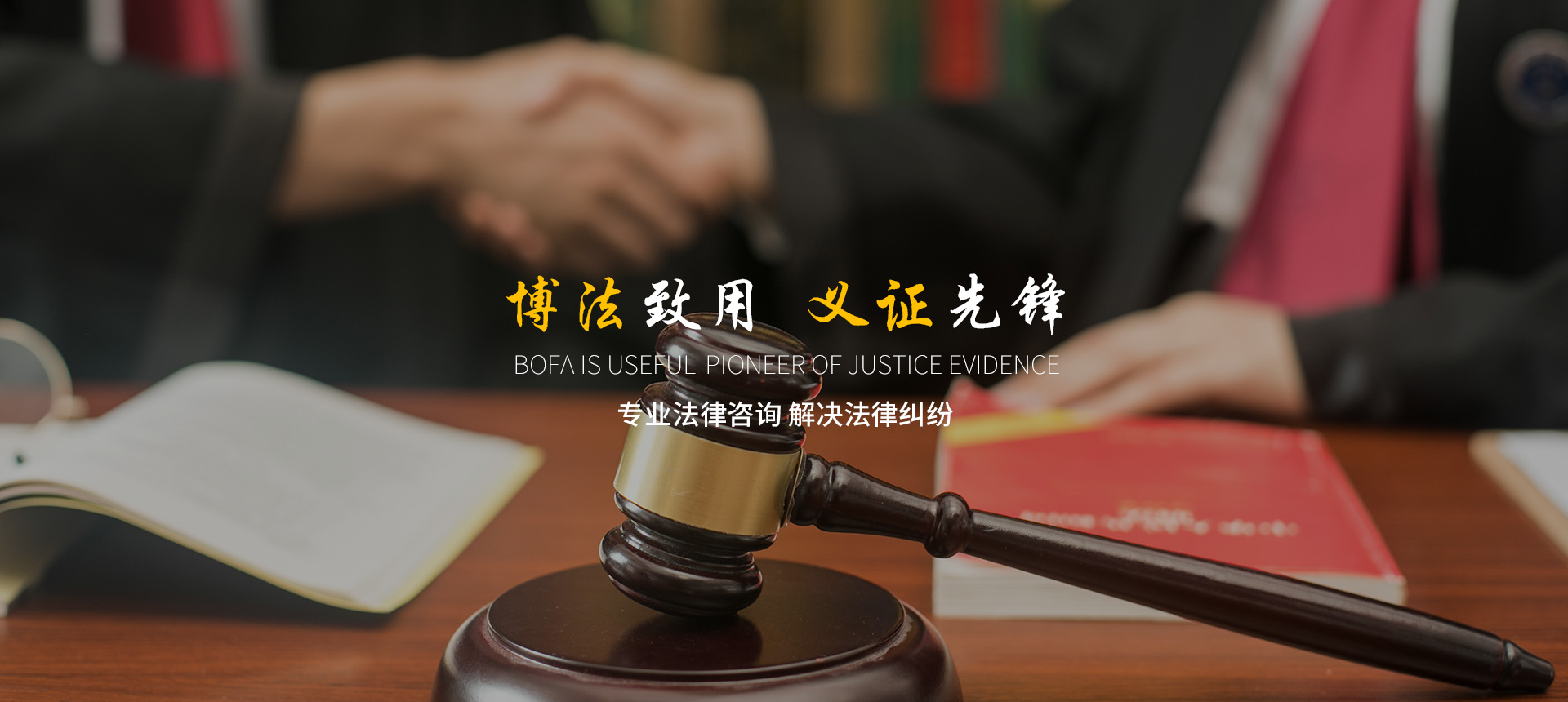法学研究
法学研究 | 跨境电商Schedule A案件新趋势:伊利诺伊州北区联邦法院审查合并被告正当性
译者按:中国跨境卖家对Schedule A案件并不陌生。Schedule A案件主要发生在知识产权权利人将电商平台上维权时,将全部涉嫌侵权的卖家(无论卖家间是否存在共同侵权的关联),以附件A的形式列为案件被告(Schedule A Defendants, SAD),在一个案件中诉讼维权,因此这类案件也被称为SAD案件。伊利诺伊州北区联邦法院(District Court for the Northern District of Illinois, NDIL)作为SAD案件常发地,该院最新司法动向对于中国跨境卖家应诉具有重要参考意义。美国芝加哥肯特法学院教授Sarah Fackrell研究了NDIL法院最新有关合并被告的判例,2024年12月11日发表博客文章“Mass joinder: Falling apart in the NDIL?”(大规模合并:会在NDIL法院分崩离析吗?),分析了NDIL法院对合并被告的司法动态。译者翻译此文,希望对应诉SAD案件的中国跨境卖家有所助益。
大规模合并:会在NDIL法院分崩离析吗?Mass joinder: Falling apart in the NDIL?
The Northern District of Illinois’ “cottage industry,” Schedule A litigation, depends on mass joinder of defendants. Plaintiffs accuse dozens, hundreds—sometimes over a thousand—defendants of IP infringement in a single case. This allows the plaintiffs to save money on filing fees and maximize this litigation model’s profitability.
伊利诺伊州北部地区的 “家庭手工业”式的SAD诉讼取决于原告大规模合并被告。原告在一起案件中指控数十、数百名被告侵犯知识产权,有时甚至超过一千名。这使得原告可以节省诉讼费用,并最大限度地提高该诉讼模式的盈利能力。
But lately, a number of judges are pushing back on joinder and raising that issue sua sponte.
但最近一些法官开始反对合并诉讼,并主动提出这个问题。
For example, Judge Blakey recently highlighted the gap between the allegations and supporting evidence in a multi-defendant infringement case. The plaintiff had alleged that the 18 defendants were properly joined because they “share unique identifiers, such as design elements and similarities of the unauthorized products offered for sale, establishing a logical relationship between them and suggesting that Defendants’ illegal operations arise out of the same transaction, occurrence, or series of transactions or occurrences”. The complaint further stated that “the Infringing Products for sale in the Defendant Internet Stores bear similarities and indicia of being related to one another.” However, Judge Blakely found these allegations were directly contradicted by the plaintiff’s own evidence – the screenshot exhibits attached to the pleadings. Moreover, “Plaintiff offer[ed] nothing to suggest a relationship between defendants allegedly infringing one copyright and defendants allegedly infringing other copyrights.” Based on this disconnect between allegations and evidence, Judge Blakey dismissed the complaint without prejudice. Minute Entry, Heather Picquelle v. The Partnerships and Unincorporated Associations Identified on Schedule A, Docket No. 1:24-cv-11042 (N.D. Ill. Nov. 4, 2024), ECF 19. He later allowed the plaintiff to proceed against five defendants. See id. ECF29.
例如,Blakey法官最近在一起多被告被诉侵权案件中指出该案件的侵权主张与支持证据之间的鸿沟。原告在诉状中声称,本案将18名被告合并是适当的,因为因为他们“具有相同的特征,如相同的设计元素和所销售侵权产品相似性,使得他们之间建立了逻辑关系,并表明被告的侵权行为是由同一笔交易、事件或一系列交易或事件引起的”。原告在起诉状中进一步指出,“在被告互联网商店销售的侵权产品具有相似性和相互关联的迹象。”然而,Blakey法官发现这些指控与原告在诉状所附截图证据自相矛盾。此外,“原告没有提供任何证据表明涉嫌侵犯一项版权的被告与涉嫌侵犯其他版权的被告之间存在关系。”基于指控和证据之间的脱节,Blakey法官驳回原告起诉。随后,Blakey法官仅允许原告起诉其中五名被告。
In another recent case, Judge Harjani raised the issue of joinder in a utility patent and trademark Schedule A case. Minute Entry, Wiesner Healthcare Innovation LLC v. The Individuals, Corporations, Limited Liability Companies, Partnerships, and Unincorporated Associates Identified on Schedule A, Docket No. 1:24-cv-07124 (N.D. Ill. Aug. 26, 2024), ECF 14. The plaintiff filed a brief in support of joinder which failed to persuade the judge. See id. ECF 17. As readers of this blog are likely aware, there is a special rule for patent joinder set forth in 35 U.S.C. § 299. Specifically, Congress only allows defendants to be joined in patent cases where they make, use, sell, offer to sell, or import “the same accused product.” The plaintiff argued that “joinder [was] proper because all of the defendants are using a subset of product images from a larger collection of images for their listings.” Judge Harjani found that this was insufficient to demonstrate that joinder of the 81 defendants was proper under either § 299 or under the normal rules of joinder set forth in FRCP 20. The plaintiff filed a motion for reconsideration, seeking permission to conduct discovery on whether the defendants were actually related; that motion was denied. Judge Harjani did, however, grant the plaintiff “leave to file an amended Schedule A against one defendant or a much smaller group of defendants if plaintiff can establish that joinder is proper.” ECF 21.
在近期另一发明专利及商标侵权SAD案件中,Harjani法官提出了同样的合并被告适当性问题。原告向法官提交了一份简报以说服法官合并被告是适当的。本博客的读者可能已经意识到,专利案件合并被告规格在美国法典第35章第299节有明确规定。在专利案件中,美国国会制定的《专利法》只允许制造、使用、销售、许诺销售或进口“相同被控侵权产品”的被告合并起诉。Harjani法官发现没有充分的证据表明原告合并81名被告符合第299节的特别规定,或符合《联邦民事诉讼规则》第20条合并被告的一般规定。原告提交了申请法院重新考虑的动议,寻求法官同意开始证据开示(discovery),以发现被告是否实际相关联。该动议被Harjani法官拒绝,但法官同时同意原告“修改起诉状附件A,只起诉其中一个被告,或在原告能确定合并被告是正当的情况下,将被告范围限缩在一个较小范围”。
Perhaps the most interesting example of this trend, however, is a Schedule A trademark case brought by Toyota. After raising the issue of joindersua sponte and ordering briefing, Judge Daniel dismissed the complaint for misjoinder. Order, Toyota Motor Sales, U.S.A., Inc. v. The Partnerships and Unincorporated Associations Identified on Schedule A, No. 1:24-cv-09401 (N.D. Ill. Nov. 18, 2024), ECF 27. In its complaint, Toyota expressly alleged that all of the defendants were working together:
然而,在这种趋势下丰田公司起诉的一件SAD商标侵权案是最有趣的案件。Daniel法官在主动提出合并被告适当性问题并要求丰田公司提供简报后,基于错误合并(misjoinder)理由撤销了案件。在丰田公司的起诉状中,丰田公司明确主张所有被告共同侵权:
25.Defendants are working in active concert to knowingly and willfully manufacture, import, distribute, offer for sale, and sell Counterfeit Toyota Products in the same transaction, occurrence, or series of transactions or occurrences. Defendants, without any authorization or license from Toyota, have jointly and severally, knowingly and willfully used and continue to use the Toyota Trademarks in connection with the advertisement, distribution, offering for sale, and sale of Counterfeit Toyota Products into the United States and Illinois over the Internet.”
25. 本案被告在同一交易、事件或一系列交易或事件中,积极协同工作,故意制造、进口、分销、许诺销售和销售假冒丰田公司的产品。被告未经丰田公司授权或许可,共同且各自地故意地通过互联网,在广告、分销、许诺销售和销售中使用或持续使用丰田公司商标,将侵权产品销售至美国和伊利诺伊州”。
According to Judge Daniel:
Daniel法官论述道:
This case follows a pattern common to “Schedule A” cases where plaintiffs allege that defendants employ similar methods and “work in active concert” to infringe plaintiffs’ intellectual property. But experience has shown that not all defendants named in a Schedule A case work together. More importantly, experience has shown that joinder under Fed. R. Civ. P. 20 is rarely appropriate in Schedule A cases. Minute Entry, ECF 23.
本案是SAD案件的常见模式,即原告指控被告使用类似方法并“积极协同工作”侵犯原告的知识产权。但经验表明,并非所有SAD案件被告都是共同侵权。更重要的是,经验表明,SAD案件很难符合《联邦民事诉讼规则》第20条合并被告的一般规定。
Inresponse, Toyota basically argued that counterfeiting is bad and, therefore, Schedule A cases should be exempt from the normal rules of joinder. See ECF 24.
在回应法官论述中,丰田公司基本上只是指出假冒商标是恶劣的侵权行为,因此SAD案件不适用合并被告的一般规则。
To be clear: Actual counterfeiting, as defined under U.S. law, is arguably the worst possible form of IP infringement. No one here is defending actual counterfeiting.
需要明确的是:根据美国法律,假冒商标是最恶劣的知识产权侵权行为。本文不是为假冒商标侵权行为进行辩护。
But not all Schedule A cases allege—let alone prove—counterfeiting. (See this forthcomingHarvard Law Review article.) So just saying “counterfeiting is bad” is not a sufficient reason to create a special joinder rule for Schedule A cases.
但并不是所有的SAD案件主张假冒商标,更别说证明(见即将发表于《哈佛法律评论》文章)。故仅以“假冒商标是恶劣的侵权行为”的理由不足以制定适用于SAD案件的合并被告特殊规则。
Toyota also urged the court to adopt the “swarm joinder” theory set forth in Bose Corp. v. P’ships & Unincorporated Ass’ns Identified on Schedule “A”, 334 F.R.D. 511, 517 (N.D. Ill. 2020). Judge Daniel refused, rejecting the “swarm” analogy.
丰田公司进一步要求NDIL法院适用Bose Corp. v. P’ships & Unincorporated Ass’ns Identified on Schedule A案创设的“全体合并”理论。Daniel法官拒绝适用“群体(swarm)”分析模式。
This is not the first time the Bose “swarm theory” has been criticized. See Bailie v. P’ships & Unincorporated Assn’s Identified on Schedule A, No. 1:24-cv-02150, 2024 WL 2209698, at *4 (N.D. Ill. May 15, 2024) (citing Estée Lauder Cosmetics Ltd. v. Schedule A Defs. (Estée Lauder II), No. 1:20-cv-00845, order at 4–10 (N.D. Ill. June 22, 2020); Estee Lauder Cosmetics Ltd. v. P’ships & Unincorporated Ass’ns Identified on Schedule A, 334 F.R.D. 182, 187–190 (N.D. Ill. 2020)). Toyota didn’t mention Bailie but it did mention the Estée Lauder cases, dismissing them as representing a “minority view.”
这不是“全体合并”理论第一次在实际案件中被拒绝适用,如Bailie案(该案引用了Estée Lauder Cosmetics Ltd. v. Schedule A Defs (Estée Lauder II)案)。丰田公司没有提到Bailie案,却提到了不支持“全体合并”理论的Estée Lauder系列案,却认为其代表“少数意见”而不需参考的。
Given these recent decisions, one wonders how long plaintiffs’ counsel will be able to plausibly characterize these cases as a minority view. At what point will they feel compelled to appeal one of these decisions, to try to make some good Seventh Circuit case law for themselves (like they did with personal jurisdiction)? As Eric Goldman has noted, if other NDIL judges were to follow Judge Daniel’s decision in Toyota, that would seriously undermine the Schedule A business model.
鉴于这些最新判决,我们不禁要问,SAD案件的原告律师认为Estée Lauder系列案不支持“全体合并”理论的“少数派意见”的观点还能坚持多久。在什么情况下,原告律师会认为有必要对某个拒绝合并的决定提出上诉,以在第七联邦巡回法庭创制一些符合其利益的判例 (就像他们对待属人管辖权那样) ?正如Eric Goldman(译者注:美国圣克拉拉法学法学院教授)所指出的,如果 NDIL 法院的其他法官效仿Daniel法官在丰田公司案的裁决,那将严重破坏SAD案件牟利的商业模式。
译后记:在译者代理的一起由Blakey法官审理的SAD案件中,Blakey法官同样以合并被告的问题驳回了原告对其他多个被告的起诉。这种趋势也体现在NDIL法院2025年1月份的一些裁决中。错误合并(misjoinder)正成为SAD案件有效应诉的程序性抗辩事由。中国跨境卖家如果被列入SAD案件被告清单,在法官没有主动提出该问题时,可通过代理律师主动提出错误合并动议Misjoinder Motion,要求另案审理。如法官支持了错误合并动议,原告基于诉讼成本考量(案件受理费、TRO/PI保全费、律师费等),可能撤诉或以较低价金额达成和解协议。中国跨境卖家在应诉SAD案件时,过去与原告方就和解金额来回讨价还价的做法已不可取,战场上得不到的,在谈判桌上也得不到。因此,根据美国法律的规定,无论是程序性还是实体性规定,只有提出适当抗辩,给原告施加压力才能在和解谈判桌上取得较有利和解条件。




